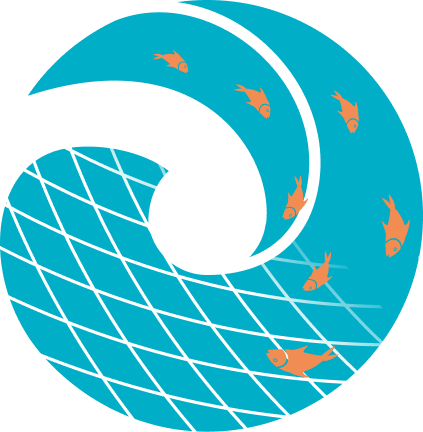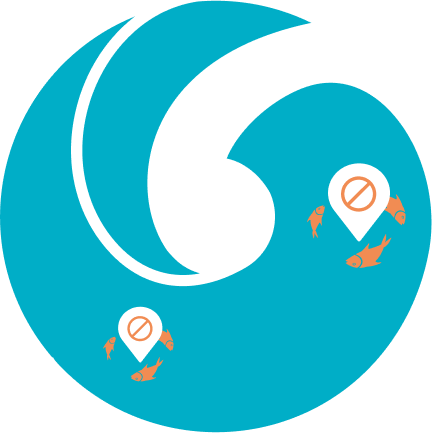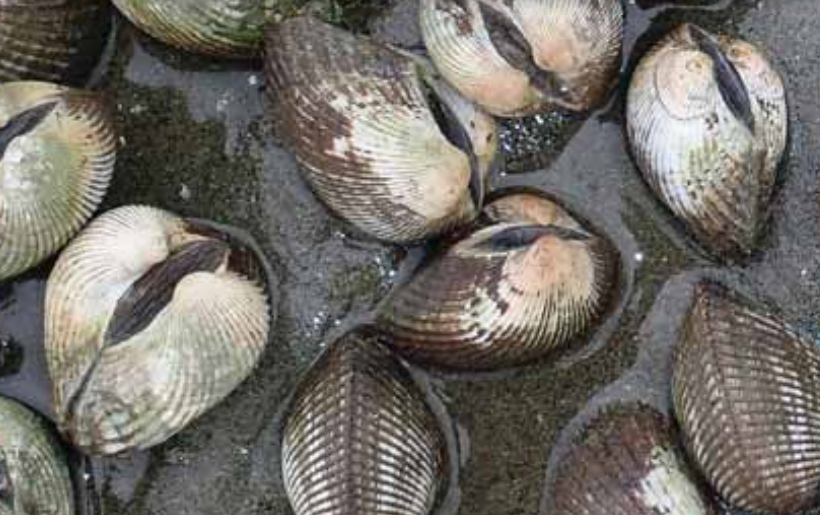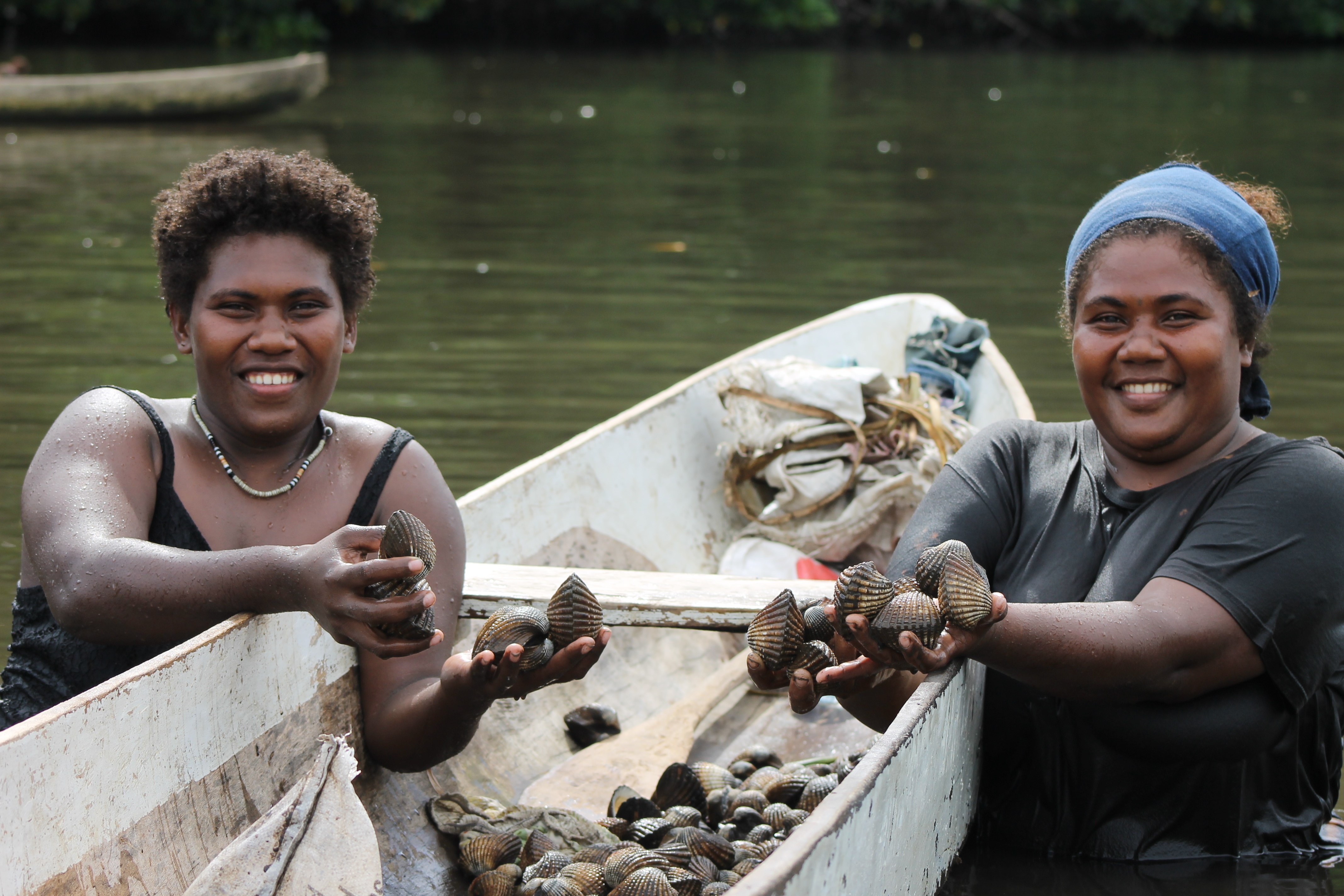Image: © Meshach Sukulu, WorldFish
To gain access to full information on ark clams, download the information sheet produced by the LMMA Network and SPC.
If you have noticed a decline in your catches or are concerned about ark clam populations, here are some priority actions the community can consider in addition to national regulations:
Fish smart rules
Gear restrictions
Ban the use of all fishing methods other than hand gleaning. Fishers traditionally glean ark shells in water no deeper than 1.5 metres. It is likely that many ark clams live in deeper water and these represent a pool of breeding clams that have the potential to restock shallower collecting areas.


Temporary bans (spawning season)
Establish closures during the spawning season. In Fiji, ark clams become ready to spawn at the start of the rainy season (December). This makes it possible to impose closures during the period November to early January to maximise spawning before they are harvested.
Tabu areas
Establish permanent no-take areas. In these areas, there needs to be a dense population of clams to make reproduction more effective. The effectiveness of the reserve could be enhanced by the introduction of ark clams from other areas. The small drifting larval stages produced in the reserve are likely to settle as juvenile clams in nearby down-current areas where they can grow and eventually be collected. Protecting breeding stocks of ark clams (kaikoso) in Fiji is believed to have increased catches by 200 per cent in nearby fished areas.


Protect marine ecosystems
Work with local authorities to minimise damage to ark clam habitats. The shallow coastal waters in which ark clams are collected may be polluted by sewage, the runoff of rain from agricultural land, silt from development and turbidity from the mining of beach sand.
Temporary bans (rotational harvesting)
If a community’s fishing area is large, an alternative to establishing a permanent reserve or no-take area is the introduction of rotational harvesting of ark clams A community fishing area is divided into a number of smaller areas that are fished in rotation each year. If, for example, there are three small areas, each area would have two years’ protection from being fished.

Fishing methods
Ark clams are often collected, or gleaned, by women, who use their toes to feel for the clams or use steel rakes in the muddy sand. The women usually fish in depths of up to 1.5 metres, where they can stand with their heads above water. The clams are important food items, particularly when the weather is too rough for fishing at sea. In densely populated atolls, they may be the most important source of food.
Like many filter-feeding animals, ark clams accumulate toxins from the surrounding water and those collected in urban areas should not be eaten raw.
Management measures in the region
There are no national management controls placed on the collection of ark clams in Pacific Islands. However, several communities in Fiji have imposing a minimum size limit of 3 cm (measured by using fingers), closures during spawning periods and long-term closures in some areas to protect breeding stocks.
Some species

Ark clams, or ark shells, are two-shelled molluscs, generally less than 80 mm long, with thick, white to tan coloured shells with strong ridges. Unlike other clams, ark clams have red blood pigments (haemoglobin), which carry oxygen to their tissues and allow them to live in murky, poorly oxygenated environments.
There are approximately 200 different species of ark clams and those belonging to the genus Anadara are distributed across the Pacific.
Ark clams live in shallow water where they burrow in sandy silt, mud and seagrass beds. In some areas, smaller individuals are more abundant near the shore and larger animals are found in deeper water. Young ark clams may settle in sand and seagrass areas and move to more productive muddy areas as they grow.
Ark clams feed by filtering food material from the surrounding water, which is sucked in one opening and pumped out from the other (the arrows in the drawing of the live clam show water movement). Their predators include fish that snap at flesh exposed between gaping shells, and large fish such as stingrays that can crush the shells with their strong jaws.
Ark clams have separate sexes and reach reproductive maturity when they are about one year old and about 20 mm long. During spawning, which may occur at the start of the wet season, females release many thousands of eggs into the water and these are fertilised by sperm released by males.
Fertilised eggs develop through very small larval stages that drift with ocean currents for eight to ten days. Less than one in a thousand of these larval forms survives to settle on the sea floor as a juvenile (sometimes referred to as spat). And less than one in a hundred of the newly-settled juveniles survives to become a mature adult and live for the six or so years required to reach a maximum size of 80 m.
Related resources

To gain access to full information on ark clams, download the information sheet.

